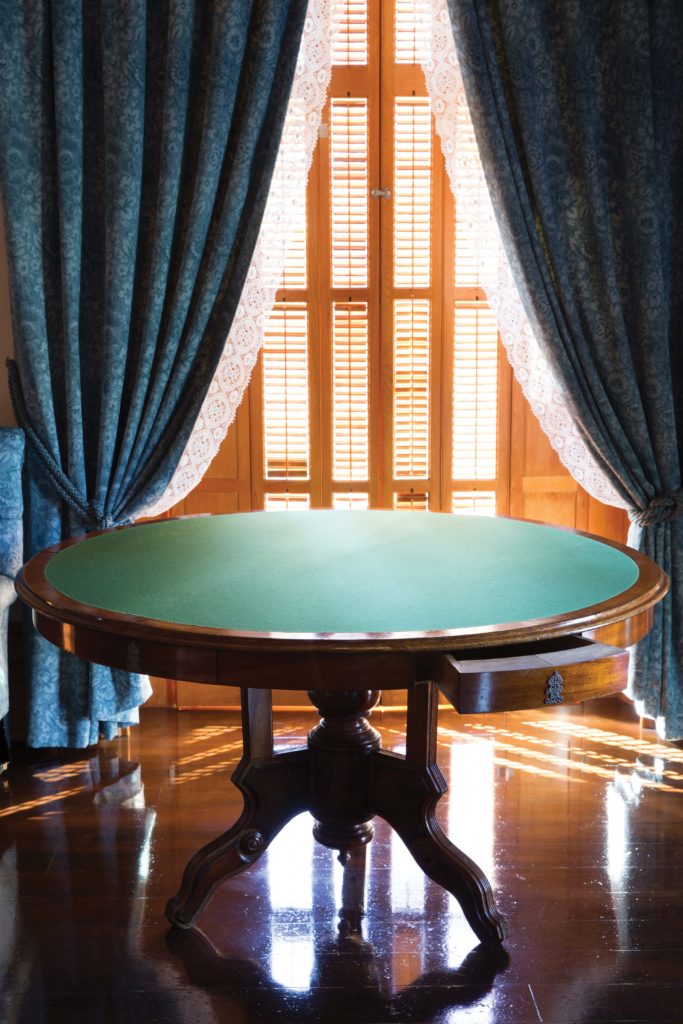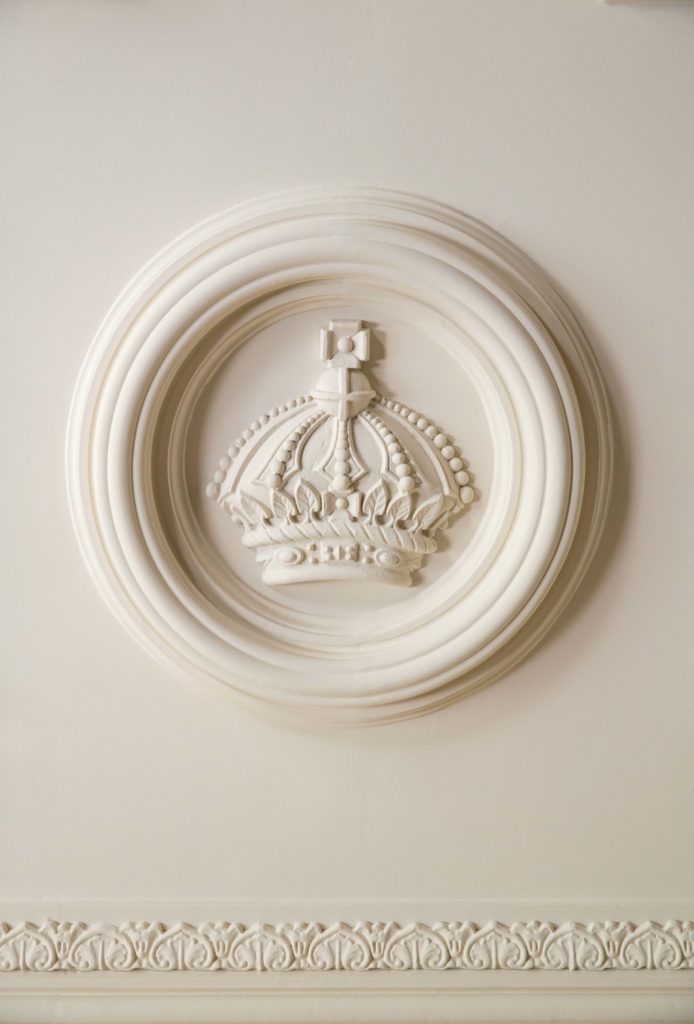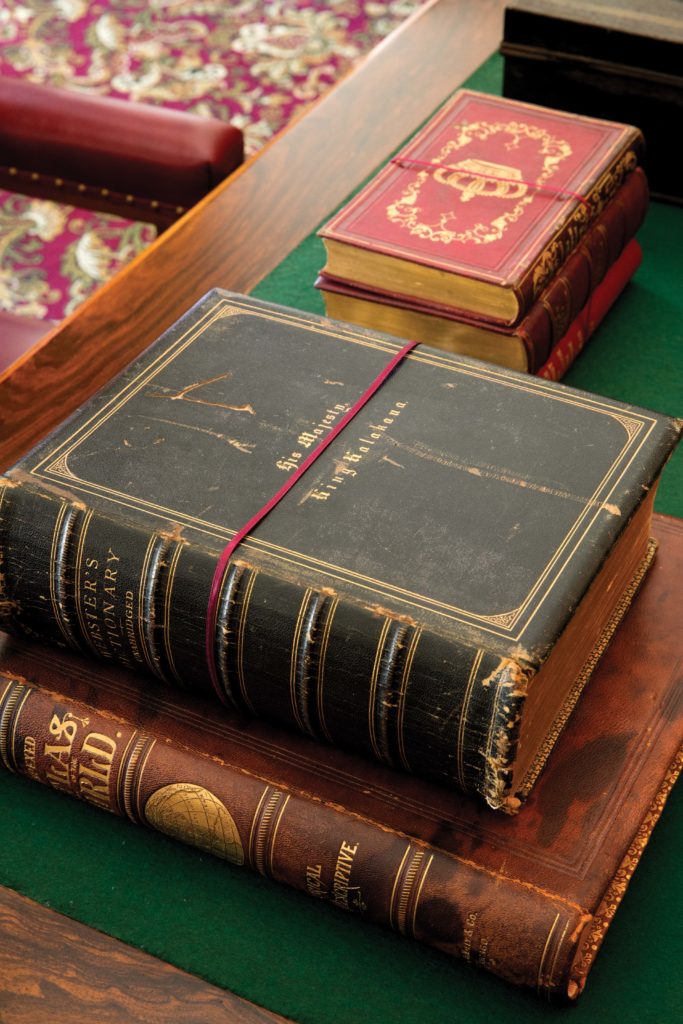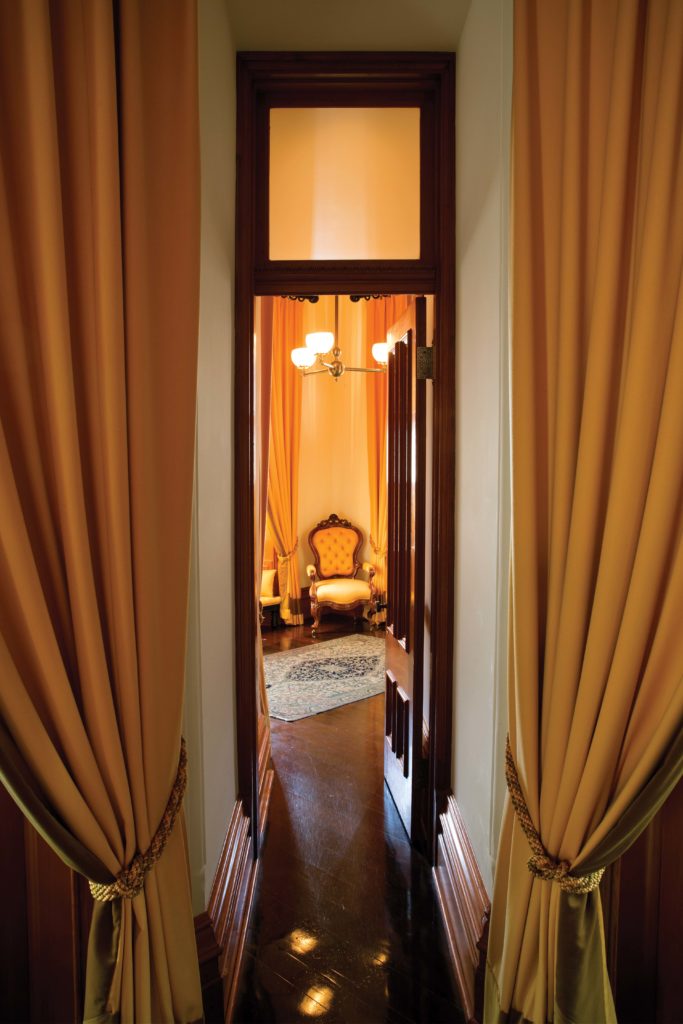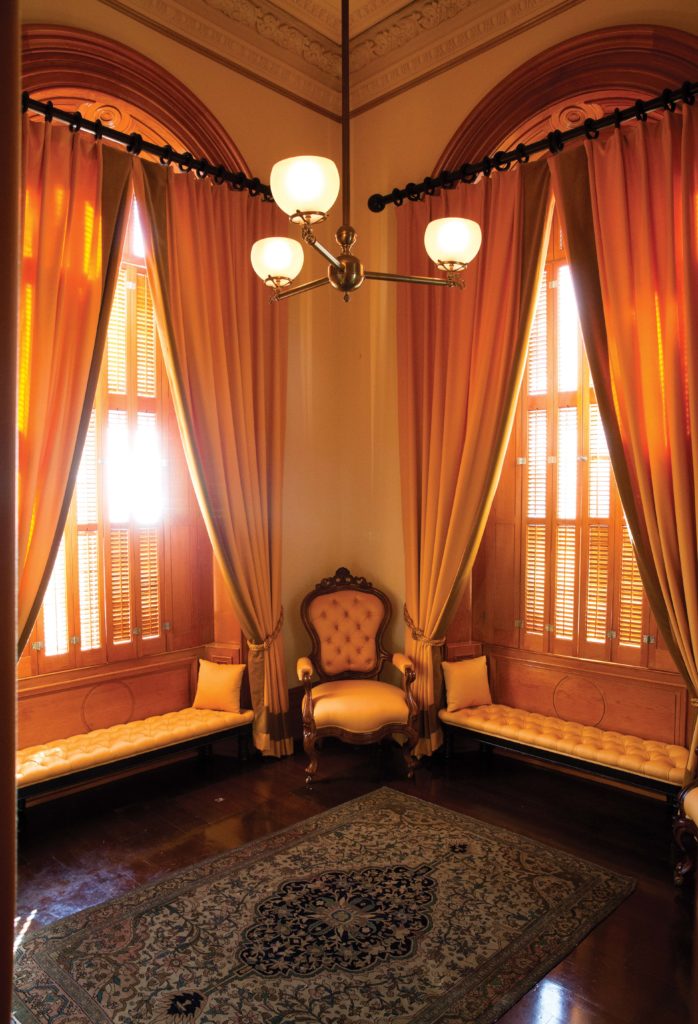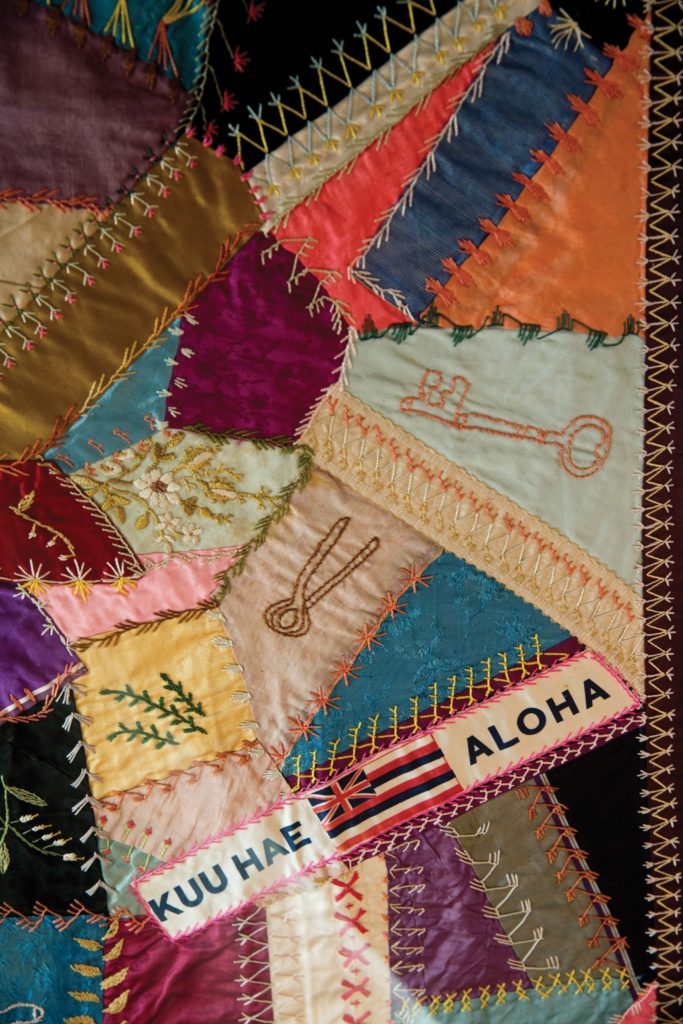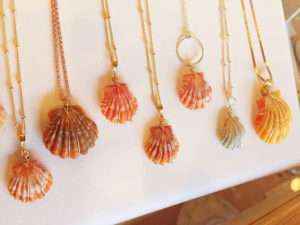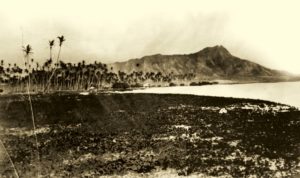By Lehia Apana
On the third floor of ‘Iolani Palace, tucked away in the corners, lie four tiny rooms barely seen by visitors. They are called the Tower Rooms based on their position directly beneath each of the palace’s four towers. Created to be sitting rooms for quiet chats and undisturbed reading, each of them is decorated with its own distinction and charm. However, for most who tour the museum, these precious rooms are largely hidden from view.
Indeed, throughout the palace, hidden things abound—some simply kept from visitors’ views, some “hidden” in plain sight, and some concealed or shrouded with mystery and through history.
In an illusionary sense, ‘Iolani Palace has often been thought to be haunted—visited by spirits and energies so much a part of Hawaiian legends. Such a claim stands to reason, given the fact the palace and surrounding structures are built on land that has been significant and sacred to Hawaiians for centuries. People have reported hearing music, seeing lights and smelling cigar smoke, all attributed to those who once called the palace home.
Relatedly, the land designated as the palace grounds was once the site of the heiau Ka‘ahaimauli. In addition, The Sacred Mound, once the royal tomb called “Pohukaina,” exists on the palace’s front lawn.
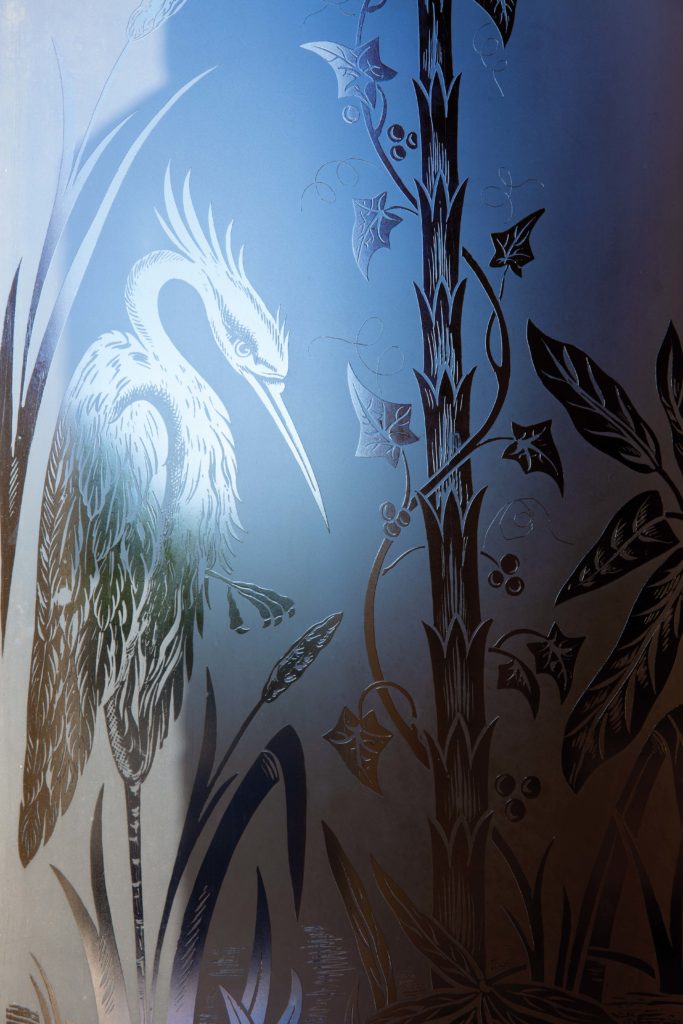
An original glass piece ordered in England, etched in San Francisco, and installed in time for King Kalakaua’s grand opening of the palace in 1882.
All this being said, it is the interior of ‘Iolani Palace that offers the most intriguing unseen things.
Visitors can get just a glimpse of three of the four third-floor Tower Rooms. Although the third has yet to be renovated, narrow hallways extend from each of the four main rooms followed by doors to each Tower Room that, when opened, reveal unusual little living spaces. Inside, one finds miniature, tufted, window benches contrasted with tremendous draperies that reach all the way from ceiling to floor. Each room has its own stylistic theme, yet all share a quaintness that echoes of the Victorian era. Based on palace records, the room off the Queen’s Bedroom has been restored “in crimson iced with white lace.”
While standing in any one of the main rooms on this floor, look up and spy the crowns within the ceiling motifs. What might not be noticeable at first glance, though, is that one of the four rooms, the King Library, features the crowns facing out versus in. Ac- cording to ‘Iolani Palace curator Heather Diamond, “It makes a statement about where the source of the power really was.”
Three different architects were employed by Kal- akaua, in rather quick succession, to design and build the royal palace, the last of which was Isaac Moore. He is largely credited with the decorative work completed in the final stages. In keeping with the Victorian architectural style, tranquil little faces look down upon viewers as part of the ceiling mosaics, and cherubs can be found peeking from the corners of doorframes.
Another room concealed from public viewing is the queen’s private bath. The room, directly off the Queen’s Bedroom, boasts a bathtub with hot and cold running water and even a functioning showerhead. At the time of its crafting, water was drawn up through the ground beneath the palace from an artesian well and pumped into tanks stored in the attic. Presumably, the water heated up because the tanks were kept in the top-most room nearest the sun. With a peek around the bathroom door, one will find her sink. And a careful eye will notice that the basin is elaborately decorated with a Greek meander, twisting and turning in the traditional squared-off fashion so popular within Victorian design.
Off the King’s Bedroom, in a little hallway leading to the third floor’s central area, is another curious feature—a rounded door with only darkness seen through the two little windows at the top. Fondly re-referred to as the “hobbit door,” it leads up a spiral staircase to the attic.
If visitors could get close enough, in the King’s Library they could see the sizeable copy of Webster’s Dictionary given to him by Webster’s own grandson during Kalakaua’s 11-month, worldwide royal travel expedition. Another two-tome book found in the library is that of Cervantes’s Don Quixote, presented to King Kalakaua by the edition’s publisher himself.
As ancient Hawaiians were unparalleled in seafaring, so did boating traditions enter into the royal sphere. In 1886, King Kalakaua conceptualized the idea of a yachting contest that would have racers sail their vessels from Southern California to O‘ahu. The idea came to its fruition in 1906 as the Transpacific Yacht Race, and Transpac exists today as the longestrunning blue-water regatta in the world. In the corner of the Gold Room, within a display case, one can spot an intricately detailed metal ship. The treasure was given to the king by the commandant of the New York Yacht Club. With careful observation one can spy four miniature dolphins at each corner of the base and tiny seashells all in a row.
Travel down to the second floor of ‘Iolani Palace and into the grand Throne Room and find what is called the Robing Room. Barely discernable, the door stands behind the thrones, partially hidden by the draperies that fall from the canopy over the dais. Look down, while in the Throne Room, and notice a surprising variety of monstera leaves and ferns woven into the magnificent carpet.
Finally, and perhaps most meaningful is that, along with all the grandeur and glory that is ‘Iolani Palace, there still lies great sorrow for a queen disposed and a monarchy overthrown. Throughout the years, this history has been kept behind closed doors much as Queen Lili‘uokalani herself was during her imprisonment. The patchwork quilt she created during her eight months as a prisoner in her own palace features messages and symbols that speak silently of her pain, her pride, and her hopefulness. One can even locate a small embroidered key and, in the center square, the hand-stitched words, “Imprisoned at ‘Iolani Palace …We begin the quilt here.”
Imprisoned at ‘Iolani Palace …We begin the quilt here.
Many palace artifacts remain tucked away for future viewing—some await the restoration of the appropriate room and some await their own restoration. Many more items that once adorned and ornamented ‘Iolani Palace have yet to be found at all. They have been absorbed by households around the world as antiques, many of their owners having no idea of their proper residence across the Pacific Ocean. It is the hope of curator Diamond that, one day, all ‘Iolani Palace’s treasures will come out of their hiding places and find their way home.
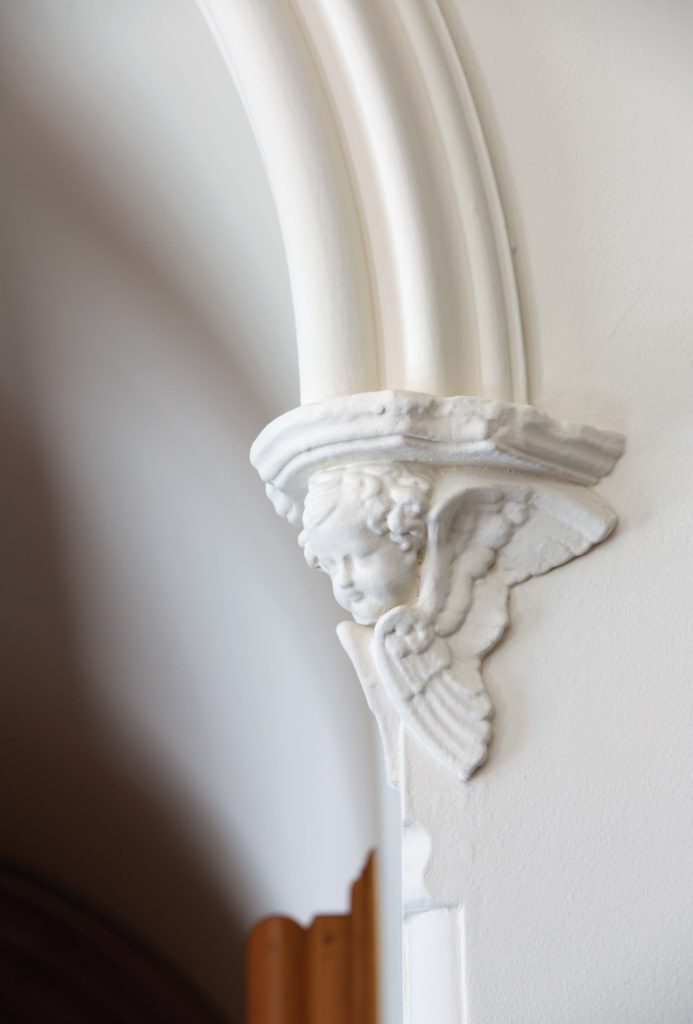
At almost every turn, ‘Iolani Palace is filled with ornate details that may not be noticeable at first glance.

